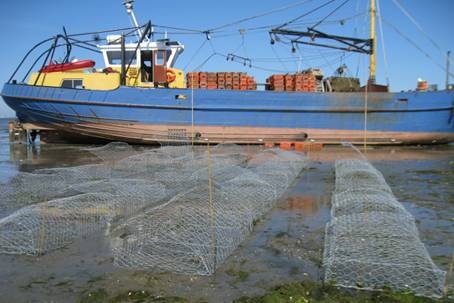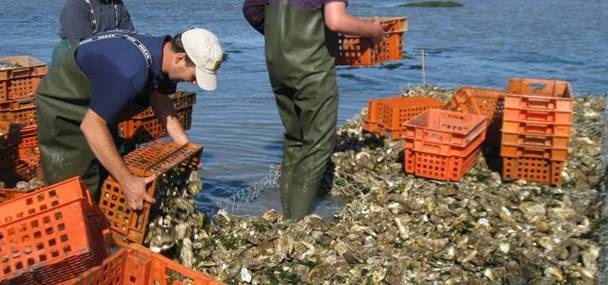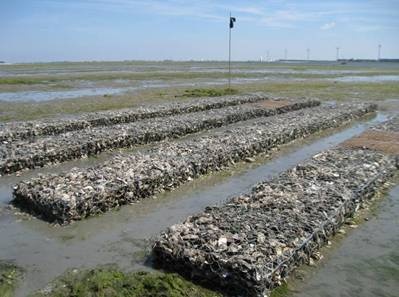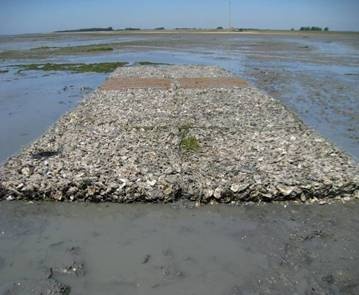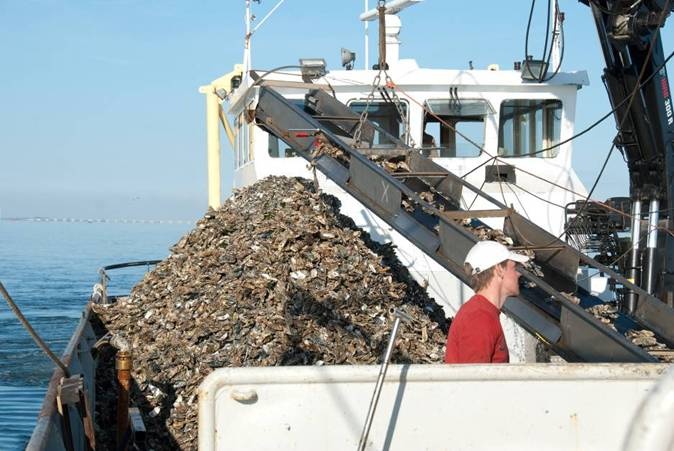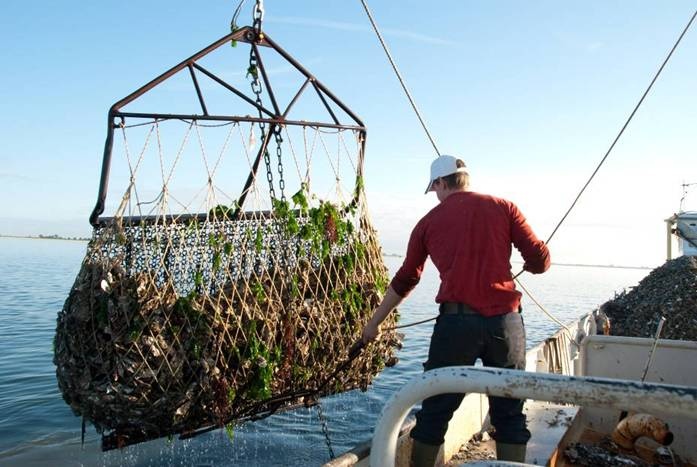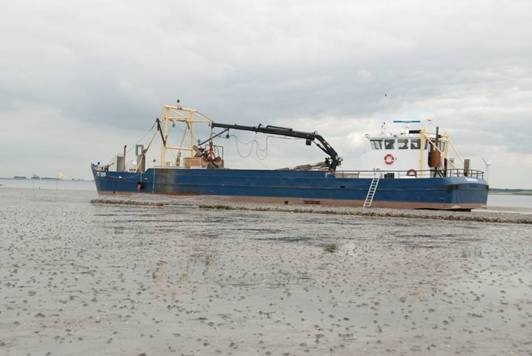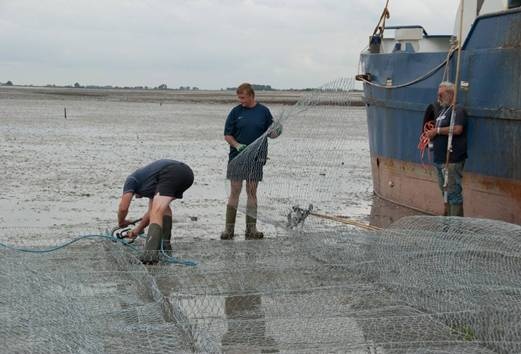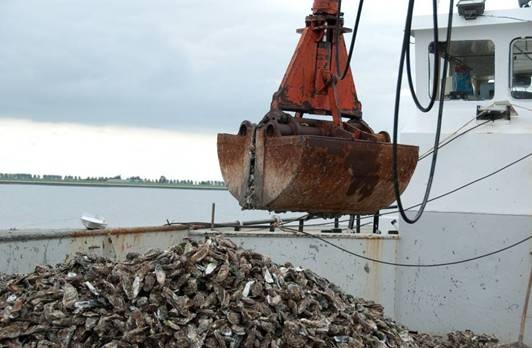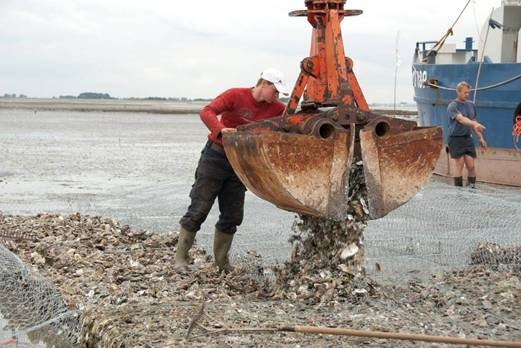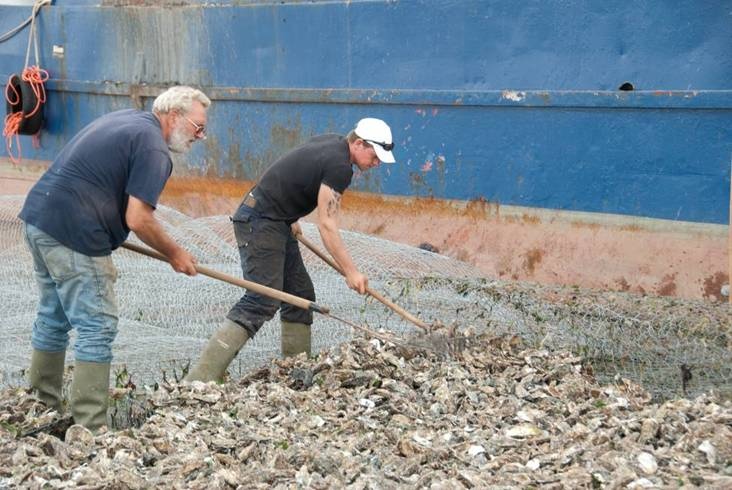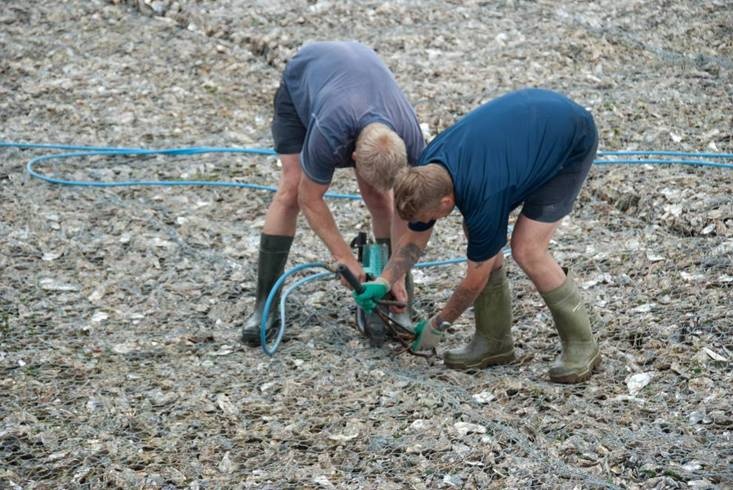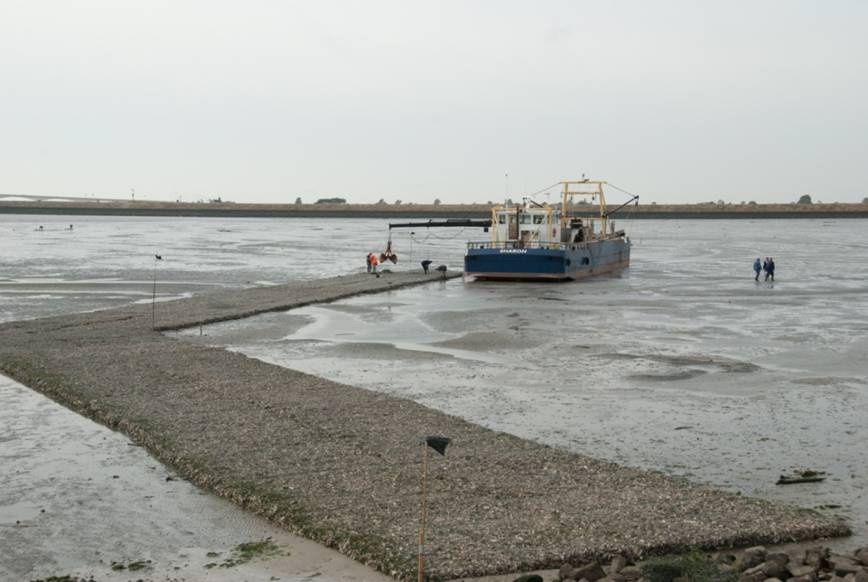Construction
After a number of small-scale pilot experiments in 2009 the construction of large-scale artificial oyster reefs was started in 2010 as part of the Building with Nature program. We created three oyster reefs at places that differ in elevation, hydrodynamic exposure and degree of erosion.
The oyster reefs are all located between the low-water mark and 75 cm above the mid intertidal zone. From other experiments we deduced that in this zone oyster larvae will be able to colonize the dead oyster shells and form a “natural” biogenic reef before the gabions have rusted away. The gabions were provided by a company specialized in ecological embankment and slope stabilization with gabions (Nautilus – Ecociviel). The reefs were constructed by this company in collaboration with a local oyster farmer, who equipped his oyster fishery boat with a crane in order to place the oyster shells into the gabions. Each reef had a footprint of 2000 m2, a maximum length of 200 m and a maximum width of 10 m. The height is approximately 0.25 m. The reef has an elongated schape, due to logistic constraints. The gabions are made on non-galvanized steel wire, expected to fix the oyster shells for at least 2 years, although this may vary across sites.
The actual construction of the reefs is simple. During low tide empty gabions are placed on the mudflat and filled with oyster shells with a crane. The oyster shells are collected from a site near the project location provided by a local oyster farmer who fishes natural stocks from places where the oysters are considered a nuisance (e.g. mussel culture plots covered with oysters, public beaches where oyster shells can harm people). The use of indigenous substrate has the advantage that there is no risk of introducing new species or pathogens into the area (Bushek, Richardson et al., 2004; Miller, Ruiz et al., 2007). After filling the gabions, they are closed with non-galvanized steel wires.
Small-scale pilot Viane
Filling gabions with oyster shells at low tide on Viane (June, 2009).
The closed and open spaced reef constructed at Viane in 2009. Each reef covers 45 m2.
Large-scale pilots at Viane and De Val
Oysters and oyster shells being fished in the Eastern Scheldt to be used as filling material for the gabions.
Construction of the large oyster reef on Viane (2010).

